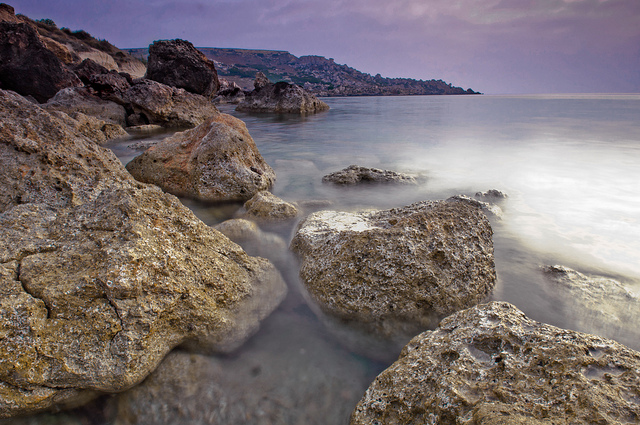After an uncharacteristically mild beginning, winter has finally hit Berlin. It arrived in the middle of the night, cloaking the city in a layer of black ice that would send me skidding down the road (not very stylishly!) during my morning commute.
With the days at their dreariest, I’m drawn to warmer places. But while an island getaway always sounds dreamy in theory, I’ve never been very good at lying around on a beach – which is why I’m dreaming of Malta.
Malta, a bridge between Europe and the Arab World, has an incredible mix of culture and history. Once protected by an Order of Knights, this island draws visitors for its unique culture – locals speak a language that is a mix of Arabic and Italian – crystal blue waters, and incredible food pulled fresh from the Mediterranean. And when you do feel like just relaxing, it is home to some of the most beautiful beaches you could possibly imagine.
Lying just 80 kilometres to the South of Sicily, Malta is an archipelago of three islands – including the similarly named Malta and the nearby Gozo and Comino – that make up one of the world’s smallest and most densely populated countries. Settlement on Malta dates back to prehistoric times and due to the land mass’ strategically important position for those looking to dominate the Mediterranean, Malta has been invaded time and time again throughout history. Conquered and ruled by many – including the Phoenicians, Greeks, Carthaginians, Romans, Byzantines, Knights, Napolean and, from the early 19th century, the British – Malta finally gained independence in 1964.
This turbulent past gives the nation a unique culture. In addition to the remnants of the country’s war-torn past, which can be observed in its characteristic walled cities and fortifications, the islands are home to some of the world’s most incredible archaeological sites. The National Museum of Archeology provides a background into the country’s history, showcasing artifacts that date back to 5200 BC. Other sites not to miss include temples such as the Ġgantija Temples, dating from around 3600 to 3000 BC, and Hal Saflieni Hypogeum, a 5000 year old underground necropolis hewn out of rock.
The Order of the Knights of Malta played a pivotal part in the nation’s history. Drawn from the most noble families of Europe, they dedicated themselves to chastity, obedience, and protecting the island. The order still exists, although these days no longer dedicated to fighting but rather to caring for the sick and the poor. Their legacy can clearly be seen in Malta’s capital, Valetta, a city that has a mix of 17th century beauty and 21st century energy. Built by the Order of the Knights of St. John during their 250-year rule, Valetta is home to Malta’s grandest cathedral: St John’s Co-Cathedral. Built between 1573 and 1578, this cathedral is where the Grand Masters of the Knights of St John would gather for communal worship. The Grand Master’s Palace – once the residence of the Masters themselves and more recently the seat of Parliament – are both incredible sights.
And while you’re bound to be kept busy by all the historical sights in Malta, you would be remiss not to explore the beaches and treasures that lie beneath the sea too. This small, richly diverse nation has some of the best snorkelling and scuba diving in Europe.
Susy Peddie is from New Zealand, now living in Berlin and writing for GoEuro, a multi-mode search engine that finds the fastest and cheapest travel combinations in Europe.
Feature Photo Beaches of Malta by huwowenthomas




